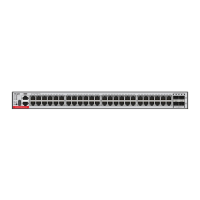Command Reference NSM Commands
ip default-network 192.168.100.0
The following example sets 200.200.200.0 as the default network. The route becomes the default one
only when it is available in the routing table.
ip default-network 200.200.200.0
Displays the routing table.
Use this command to configure a static route. Use the no or default form of this command to restore
the default setting.
ip route network net-mask { ip-address | interface [ ip-address ] } [ distance ] [ tag tag ] [ permanent |
[ weight number ] [description description-text] [ disabled | enabled]
no ip route network net-mask { ip-address | interface [ ip-address ] } [ distance ]
default ip route network net-mask { ip-address | interface [ ip-address ] } [ distance ]
Network address of the destination
The next hop IP address of the static route
(Optional) The next hop egress of the static route
(Optional) The administrative distance of the static route
(Optional) The tag of the static route
(Optional) Permanent route ID
(Optional) Indicates the weight of the static route. The
weight is 1 by default.
description description-text
(Optional) Indicates the description of the static route. By
default, no description is configured. description-text is a
string of one to 60 characters.
(Optional) Indicates the enable flag of the static route. The
flag is enabled by default.
No static route is configured by default.
Global configuration mode
The default administrative distance of the static route is 1. Setting the administrative distance allows
the learnt dynamic route to overwrite the static route. Setting the administrative distance of the static
route can enable route backup, which is called floating route in this case. For example, the
administrative distance of the OSPF is 110. You can set its administrative distance to 125. Then the
data can switch over to the static route when the route running OSPF fails.

